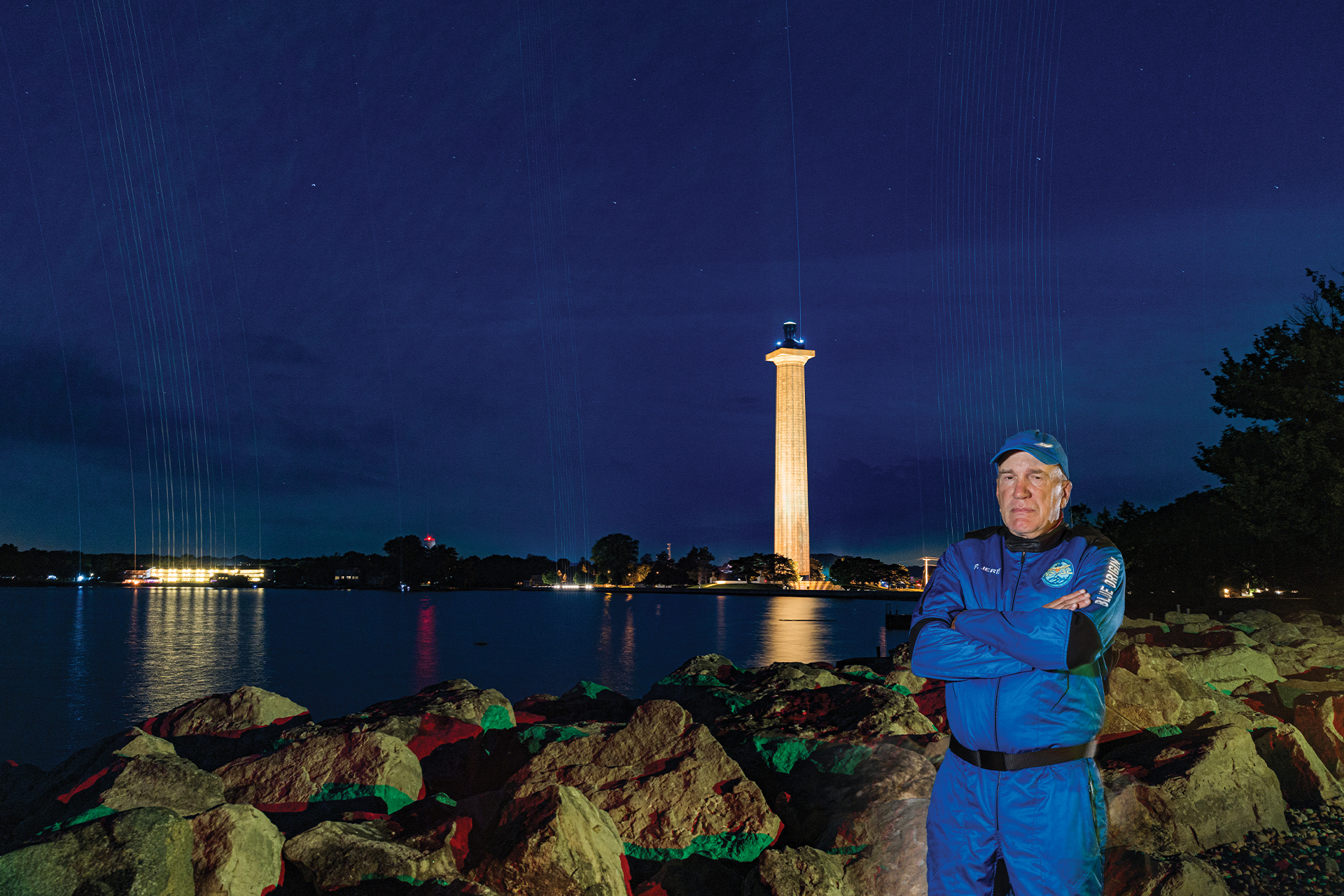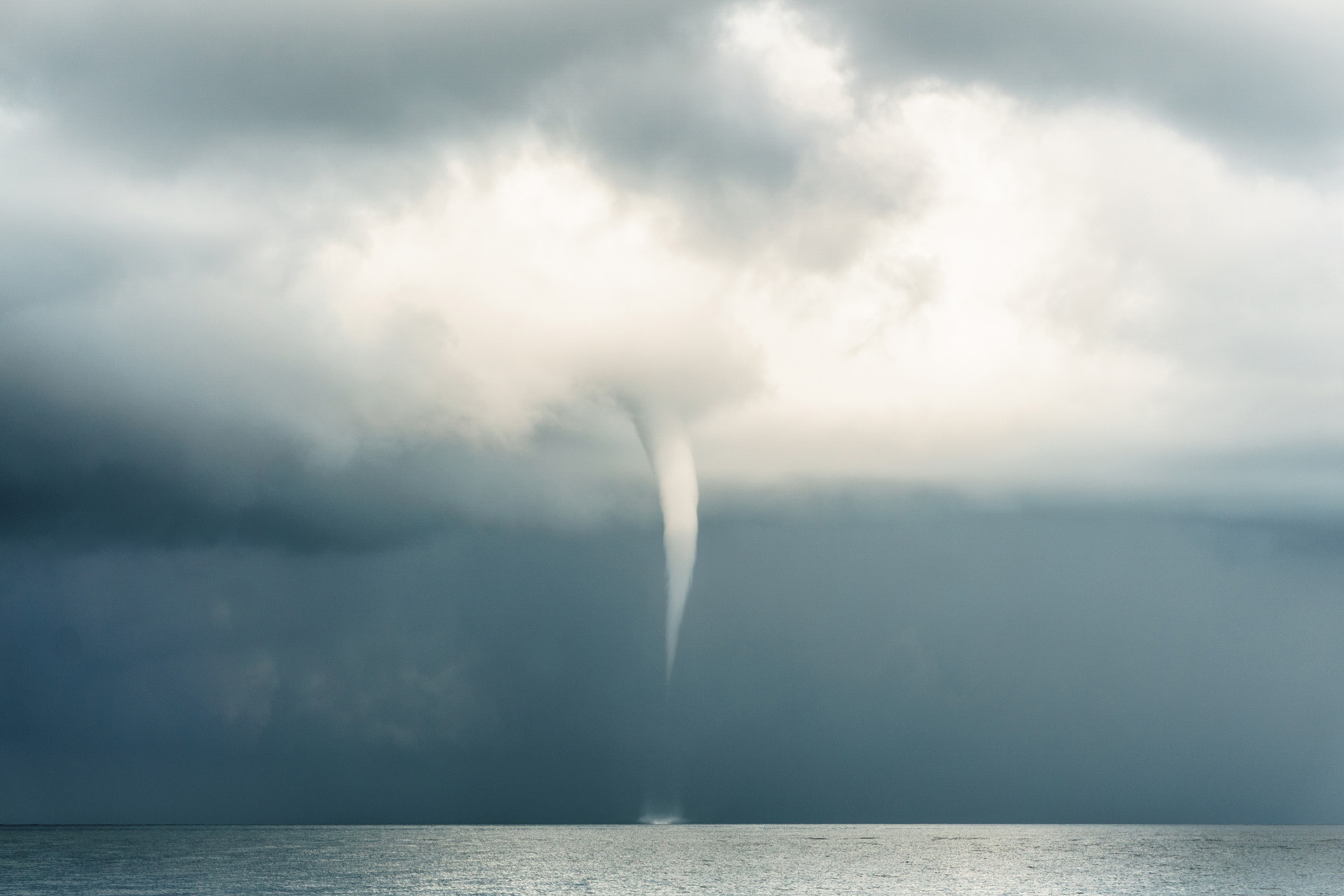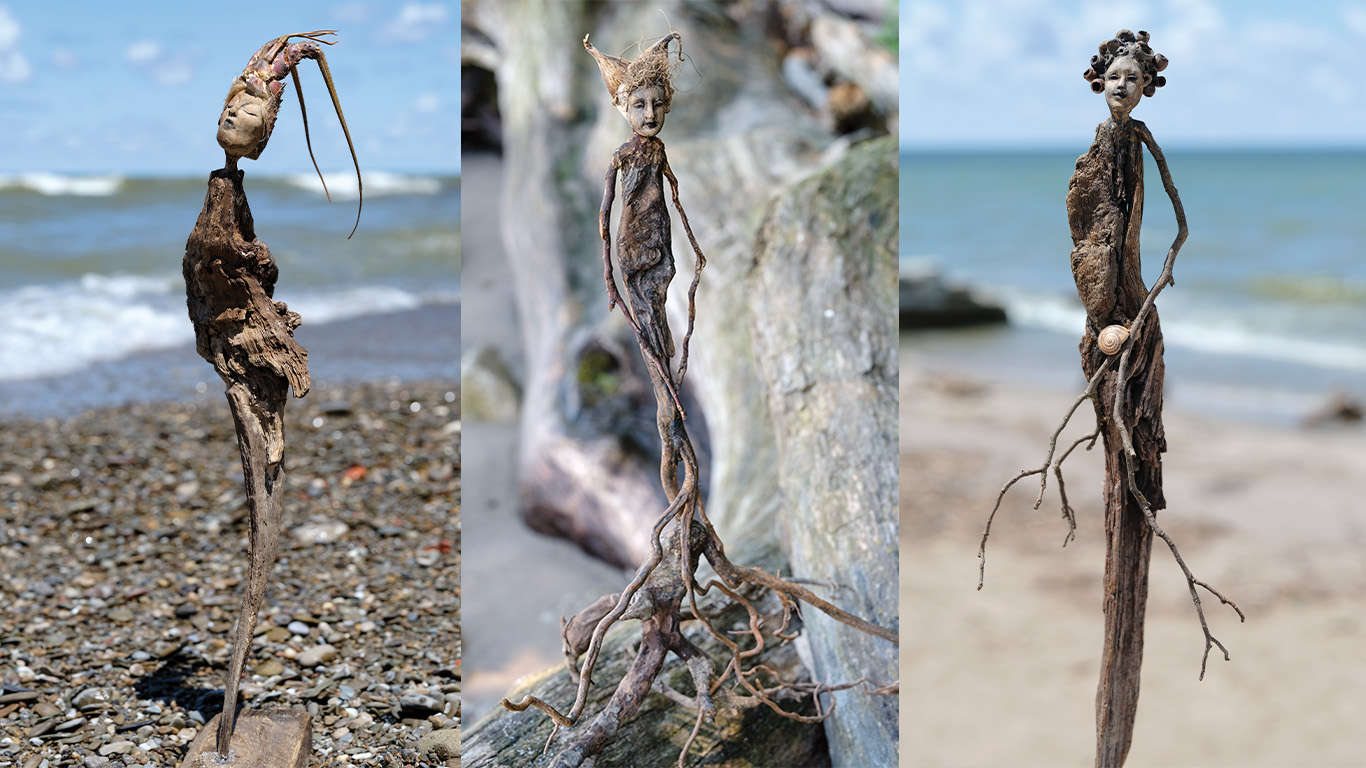Are Mysterysnails a Threat to Lake Erie?
Lynne Beaty, assistant professor of biology, and her research team are determined to find out if the population of this invasive species is increasing — and what that could mean for Lake Erie.
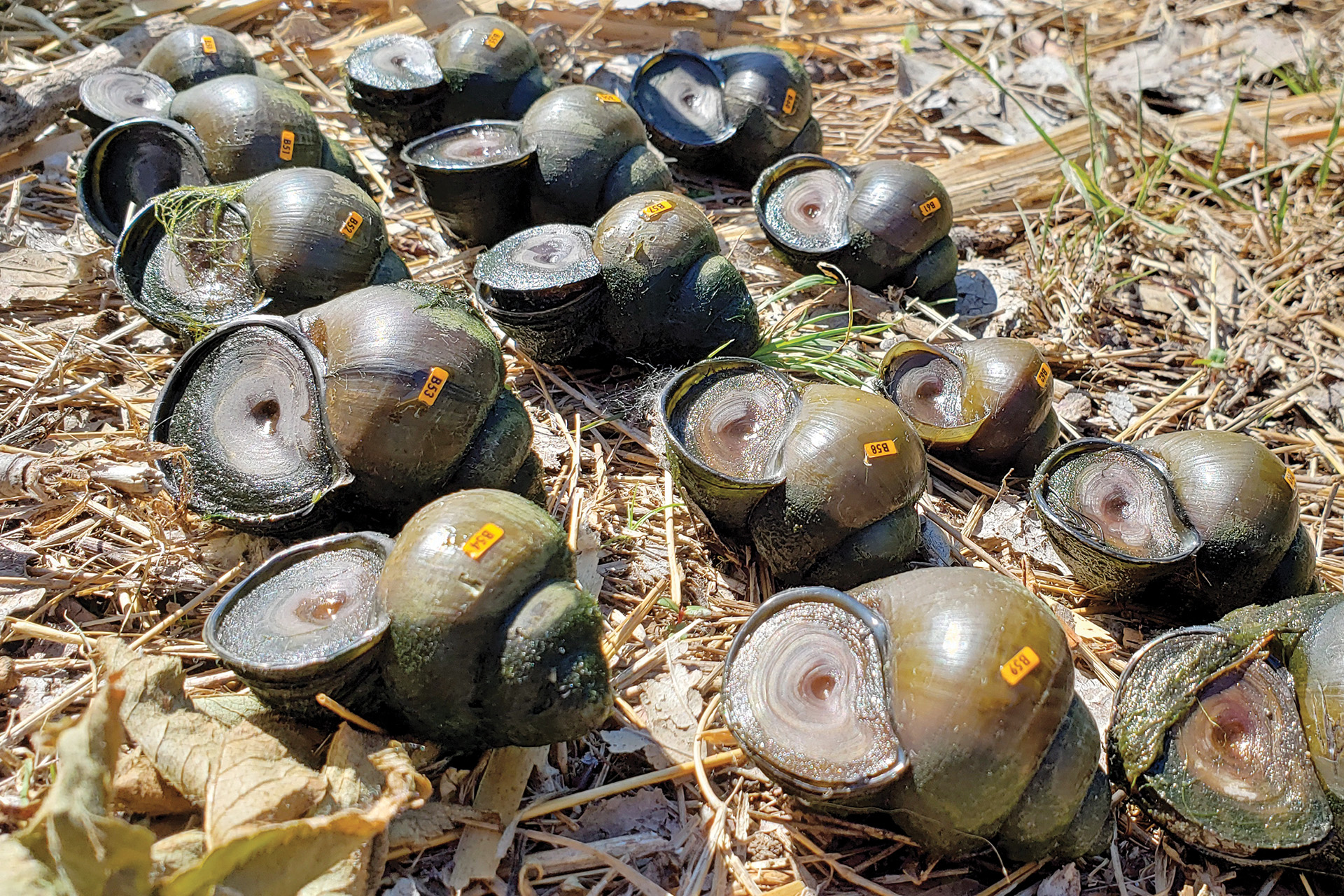
Beekeepers often use itty bitty tags for identification purposes — and similar tags are now being used to track an invasive species that’s still very much shrouded in mystery.
Lynne Beaty, an assistant professor of biology at Penn State Erie, The Behrend College, has been putting on her waders and tagging invasive mysterysnails along the shoreline of Presque Isle State Park in Erie, Pennsylvania, since 2019. And she and her research team are back at it this summer, determined to find out if the snail’s population is increasing — and what that could mean for Lake Erie.
“Among all invasive species, the impact of invasive snails is less known than other groups,” says Beaty.
But there are more unanswered questions swirling around this non-native species, including its name. Some say the “mystery” reflects its unusual lifestyle. The snails give birth to young in the spring, which more or less disappear before “miraculously” re-appearing weeks later as fully developed snails in deeper water. Others attribute the mystery to how incredibly difficult it is to tell the difference between some native and non-native species, often requiring a scientist with Sherlock Holmes-like skills.
What we do know is that invasive snails can cause major problems by carrying disease, interfering with commercial fishing and clogging lake and stream water pipes. They also crowd out native snails, throwing our freshwater ecosystem out of whack and potentially threatening snail-eating species such as walleye and perch.
“Mysterysnails are incredibly hardy,” explains Beaty. “They have a trap door they can close and survive out of water for days at a time. That’s something you wouldn’t think would be possible for something with gills. And they can reproduce quickly.”
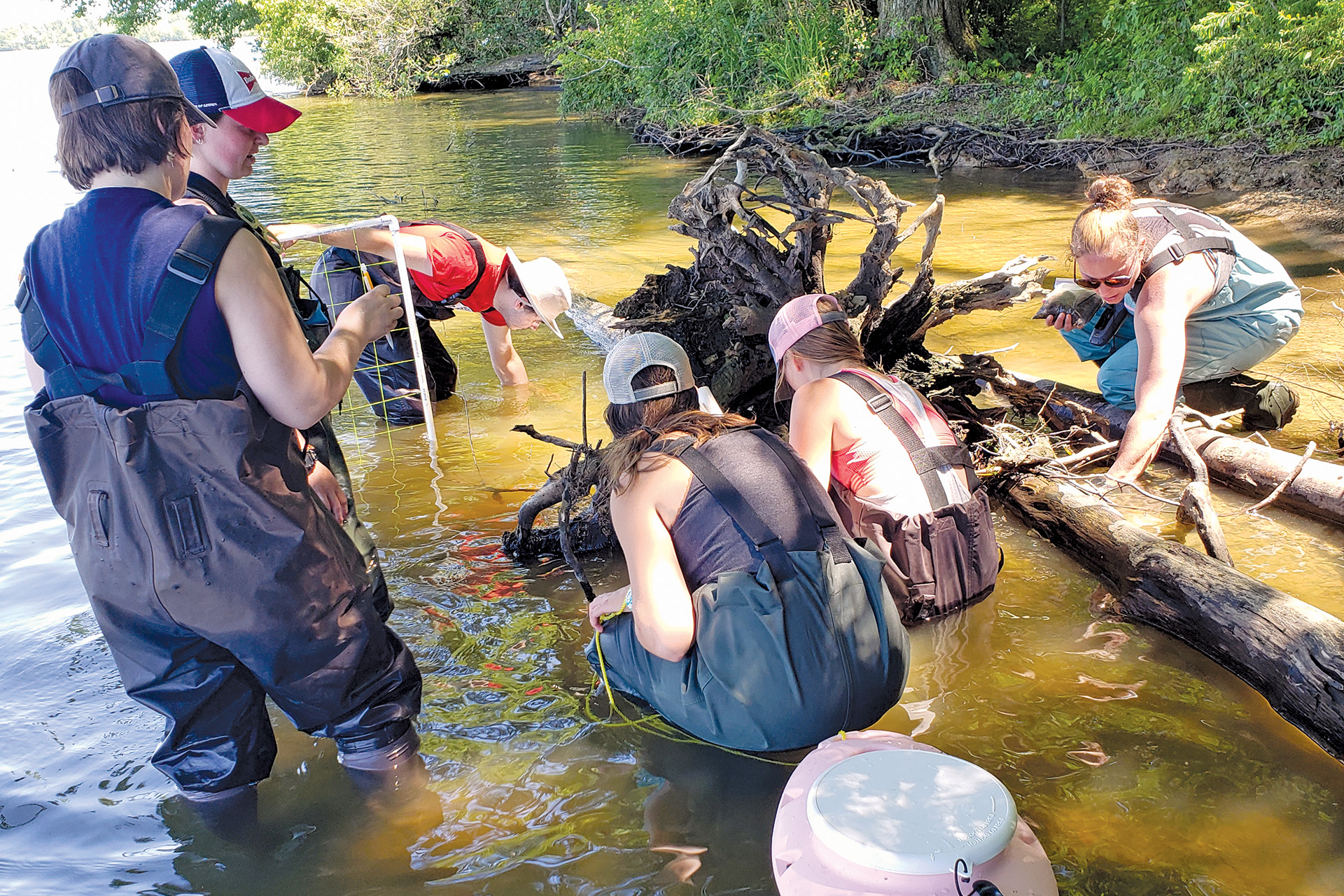
Beaty and her snail squad of researchers are out in the field (or in this case, the water) from May through September, wading in and reaching down into the murky water mysterysnails prefer. Sometimes the team finds things in the water besides mollusks, including “pool floaties, naked baby dolls and some really creepy stuff,” she says.
Last summer, 1,400 mysterysnails were successfully tagged by Beaty’s team during the mark-and-recapture portion of the study.
“That’s a lot of tagging,” admits Beaty, who estimates 7,000 mysterysnails along the Presque Isle shoreline have been studied so far. “We don’t know if the numbers are increasing everywhere, or not. But we will do it again this year to compare and get total counts.”
Tags are attached to the 2 1/2-inch-long aquatic snails by UV-activation (sunshine or a gentle UV flashlight) and do no harm. The researchers also use fingernail polish to mark codes on some tags. (No word on which shade the snails prefer.)
Historically called Chinese and Japanese mysterysnails and part of the genus Cipangopaludina, the snails were introduced to this country in 1892 at an Asian food market in California. It’s thought they were then either accidently dropped into the San Francisco Bay as food waste or released on purpose to start snail production for both restaurant and home consumption.
We do know a bit more about how mysterysnails got into the Great Lakes. They were released by local fishermen into Lake Erie in the 1940s as food for channel catfish.
Although snails of many kinds have been eaten around the world for centuries, Beaty cautions against taking a fork to mysterysnails.
“Sometimes after we gather snails, we’re asked by people if they can take them home to eat,” says Beaty. “But ... we don’t know what parasites the snails may have.”
In the snail hunting off-season, Beaty and her assistants return to their lab to conduct tests on the specimens they obtained. One determines levels of metal contamination in to see if the snails are toxic, which would make them a health hazard to other animals and humans. Species identification work also is done to help with proper naming.
Knowing more about their habits and lifecycles can help scientists determine ways to combat the invasive mollusks. (Right now only hand removal is completely safe and effective.)
But Beaty knows she may be in a race against time.
Even more frightening? Another species, invasive New Zealand mudsnails, were found in a few Lake Erie tributaries last year. These tiny snails reproduce quickly and can live outside water for weeks, making it easy to hitch rides on boots, clothing and gear and move to other bodies of water.
“The mudsnails,” says Beaty with a sigh, “are another story.”
Stay on top of everything Lake Erie has to offer — all year long — by subscribing to our free The Splash newsletter. It’s your guide to the best food, drinks, parks, beaches, shopping, festivals, music and more.
Story:
Jill Sell
2024 May/June

